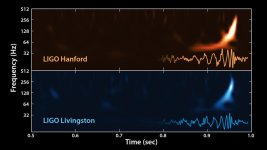Preliminary experimental results relating to quantum gravity have just been released:
https://phys.org/news/2023-06-unveiling-quantum-gravity-results-icecube.html
There is a quantum gravity model where the speed of ultrarelativistic particles decreases with increasing energy.
Although the predicted effect is extremely small, it could accumulate to observable levels when viewing radiation from very distant (*) astronomical sources.
It is possible the effect may explain why gamma ray bursts and ultra high energy neutrino bursts thought to have a common origin are observed at different times.
(*) To quantify "very distant", the remote gamma ray burst which was observed in 2000 was emitted when the Universe was only 10% of its present age.
The brightness was enormous, at least 1,000,000,000,000 times that of our Sun, or thousands of times that of the explosion of a Supernova.

We can still see the afterglow!
https://phys.org/news/2023-06-unveiling-quantum-gravity-results-icecube.html
There is a quantum gravity model where the speed of ultrarelativistic particles decreases with increasing energy.
Although the predicted effect is extremely small, it could accumulate to observable levels when viewing radiation from very distant (*) astronomical sources.
It is possible the effect may explain why gamma ray bursts and ultra high energy neutrino bursts thought to have a common origin are observed at different times.
(*) To quantify "very distant", the remote gamma ray burst which was observed in 2000 was emitted when the Universe was only 10% of its present age.
The brightness was enormous, at least 1,000,000,000,000 times that of our Sun, or thousands of times that of the explosion of a Supernova.
We can still see the afterglow!
I would put the cart before the horse:
An expanding universe is thesis. So age of 10 % is thesis.
The brightnesses contradict all theoretical expectations and practical experiences.
Also a supernova is thesis.
Quanta are thesis.
Quasars have been observed bound to galaxies. With redshifts different up to a factor of about 10.
I would put observation before thesis generation instead of thesis generation before observations.
An expanding universe is thesis. So age of 10 % is thesis.
The brightnesses contradict all theoretical expectations and practical experiences.
Also a supernova is thesis.
Quanta are thesis.
Quasars have been observed bound to galaxies. With redshifts different up to a factor of about 10.
I would put observation before thesis generation instead of thesis generation before observations.
All of this discussion about gravity..
Has anyone asked ZM or NP to build a Gravity driven audio amplifier.... We could generate sound pulses by creating gravity waves, sort of like the way the plasma tweeter works.
Hmmm... what would happen if the chest of a human was hit with 20Hz gravity waves... I mean that would have a huge bandwidth, so even if gravity accelerator in the speaker were to be faulty, the human, and the house, would be OK, right?
Also, do we have gravity monopoles? That might be an issue. It might shake things in the house next door too. I assume that gravity is a bipole, so the gravity waves would be controllable within a small enclosure. Say, 12 inches square?
Has anyone asked ZM or NP to build a Gravity driven audio amplifier.... We could generate sound pulses by creating gravity waves, sort of like the way the plasma tweeter works.
Hmmm... what would happen if the chest of a human was hit with 20Hz gravity waves... I mean that would have a huge bandwidth, so even if gravity accelerator in the speaker were to be faulty, the human, and the house, would be OK, right?
Also, do we have gravity monopoles? That might be an issue. It might shake things in the house next door too. I assume that gravity is a bipole, so the gravity waves would be controllable within a small enclosure. Say, 12 inches square?
We could generate sound pulses by creating gravity waves...
We could develop a transducer which would generate micro black holes, merge them together and convert the resulting gravity waves into phonons.
These mass transporting sound particles would resonate with the black hole merger frequency range of 40-2,000 Hz, making a plasma tweeter a necessity.
A micro black hole is smaller than an atom so we can expect unpredictable quantum effects that could result in Alice Cooper sounding like Alison Moyet!
Attached is an image of a MicroPhonon© transducer in its experimental stage.
Attachments
If that's the microPhonon... I'd hate to see the macroPhonon...
I do like the idea of the Phonon.... maybe air rarefaction and compression is actually driven by phonons... A whole new realm of Modern Physics... Dr. Galu!
I do like the idea of the Phonon.... maybe air rarefaction and compression is actually driven by phonons... A whole new realm of Modern Physics... Dr. Galu!
I just looked this up. The 46B figure is merely the calculated extrapolation of where the 13+ billion observable boundary would have expanded to, 13+ billion years after. The snapshots of photons or gravity waves we can possibly observe were still only <13+ billion away in distance or in time, when they were created. So it is still valid to call it an incredibly odd coincidence, that the BB happened just beyond the observable limit c/Hubble's Constant. 4.4B years in the future, the same calculation and conclusion would be drawn. 4.4B years in the past when the Earth was formed, well we don't know. But perhaps some cosmic/gravitational mirror could one day enable us to make times-past observations of quasar/supernova/etc to decide the matter.The radius of the observable universe is 46 billion light years.
Beyond that radius, even light emitted at the Big Bang will not have had sufficient time to reach us.
The radius of the observable universe is calculated based on its rate of expansion, its current temperature and its composition - and not directly on its age.
Sounds complicated and it is!
View attachment 1182753
Perhaps we should distinguish between the 'Observable Universe' and the 'Reachable Universe'.
View attachment 1182760
.
Last edited:
By the way: how were the alleged "gravity waves" of "big bang" or of "black holes" detected? I mean the method. Does this fulfill conditions which are "scientific"? Look it up;-)
how were the alleged "gravity waves" of "big bang" ... detected?
When were gravitational waves originating from the Big Bang detected, cumbb?
Primordial gravitational waves from the Big Bang should still echo through the universe today.
However, they will be much fainter and more difficult to detect than the gravitational waves which originate from colliding black holes.
<13+ billion away in distance or in time
Your conflation of time (in years) and distance (in light-years) is making it difficult for me to follow your argument.
All I know is:
Because of the accelerating expansion of the universe, distant objects are much farther away than their age would have us think. That's why the edge of the observable universe is estimated to be about 46 billion light-years away, even though the universe itself is only 13.7 billion years old.
Light from galaxies in the universe beyond our observable universe has not yet had time to reach us, and its journey time is made even longer by the expansion of space.
...the observable limit c/Hubble's Constant.
Some googling reveals this is the method of calculating the radius of the Hubble sphere, i.e., r = c/H, which equals 14.4 billion light-years.
The Hubble radius can be used to calculate the Hubble volume, which is proportional to (c/H)^3.
The Hubble volume is frequently (but mistakenly) used as a synonym for the observable universe.
The above is a visualisation (courtesy of Wikipedia) of the whole observable universe. The inner blue ring indicates the approximate size of the Hubble volume.
Note that the radius of the observable universe is much greater than the radius of the Hubble volume.
Last edited:
On the right path: when should something undetectable be detectable;-?When were gravitational waves originating from the Big Bang detected, cumbb?
But you explain once LIGO, please;-)
But you explain once LIGO, please;-)
I notice you simply replied to my question with yet another question - no answer and no acceptance that you were peddling disinformation.
LIGO has previously been discussed in this thread: see posts #151 and #154.
You said in response that "no one has ever seen a black hole or a neutron star!" which must be about the dumbest statement I've read on this thread!
However, for those of a scientific bent:
LIGO ( Laser Interferometer Gravitational-wave Observatory) can translate the interference that gravitational waves cause in the laser beams bouncing between its detection mirrors into sound waves that we can hear.
The result is a 'chirp' representing the arrival of the gravitational waves.
The video in this link reveals the 'sound' of two black holes colliding: https://www.ligo.caltech.edu/video/ligo20160211v2
Attachments
It may have to suffice that there is a speed of light and that it has a (relative) constant value. To conclude distances and age directly is not feasible with it for the time being.... that the BB happened just beyond the observable limit
Assumptions about e.g. age and distance result from indirect conclusions (based on only allowed interpretation of an observation): Methods of testing are based on these indirect conclusions: Circular reasoning.c/Hubble's Constant
;-)
Our big bang thesists obviously have no education in methods of research: Here a little criticism concerning a small part of the experimental setup. I, for example, would already start with the basics.
Would you understand - could;-? Prove it;-)
https://www.gsjournal.net/Science-Journals/Communications-Gravity/Download/6576
;-)
Would you understand - could;-? Prove it;-)
https://www.gsjournal.net/Science-Journals/Communications-Gravity/Download/6576
;-)
- Home
- Member Areas
- The Lounge
- Does this explain what generates gravity?

